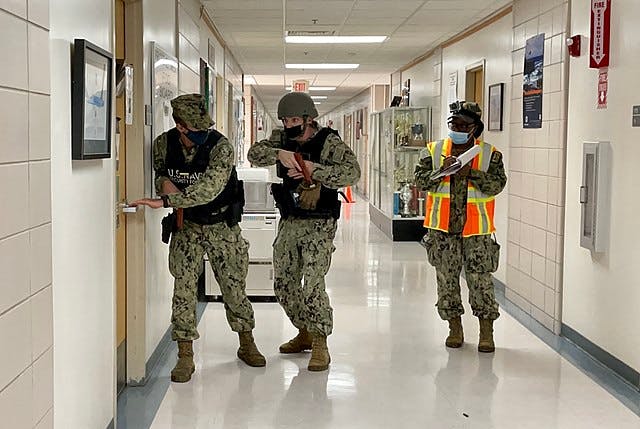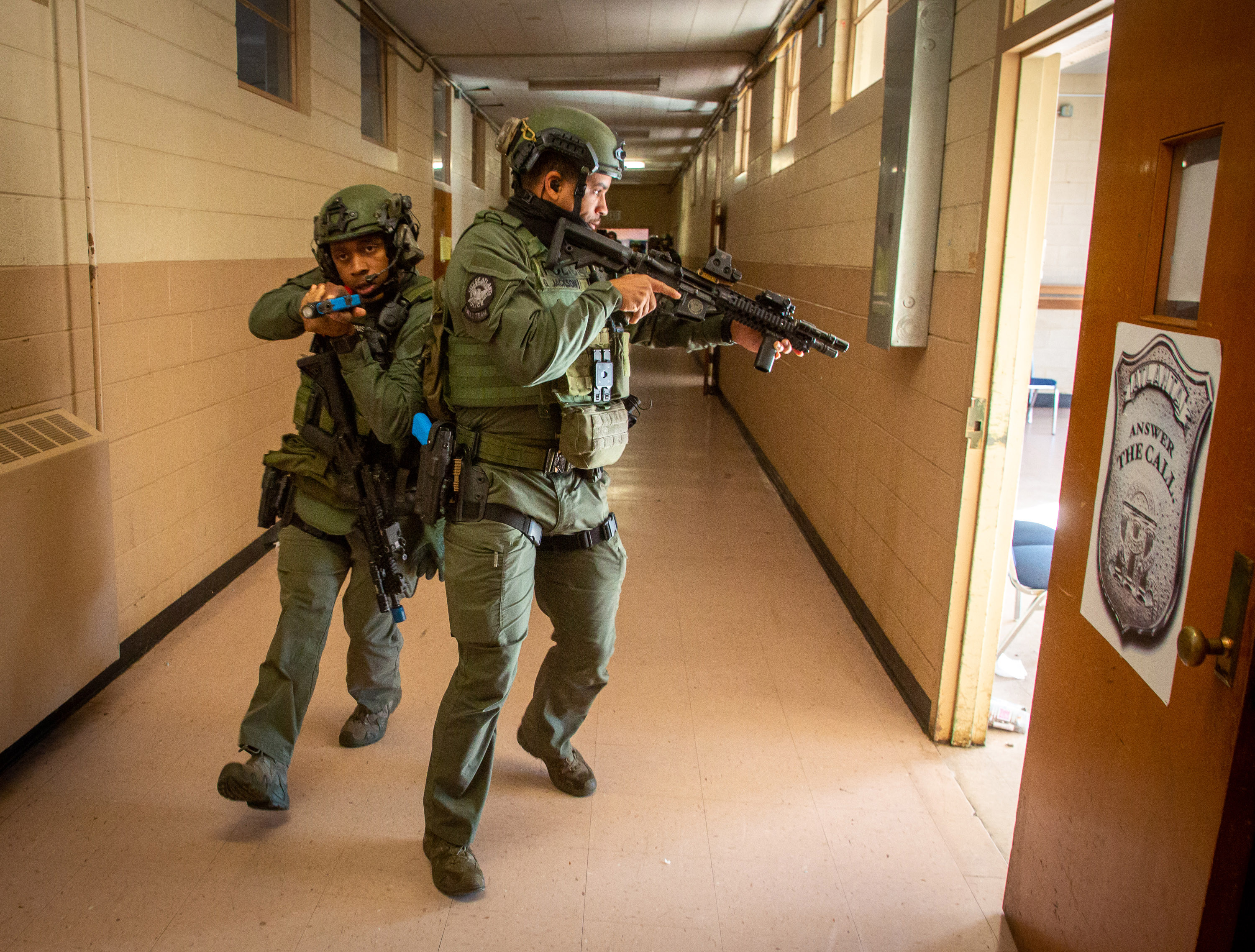What You Need to Know About Effective Active Shooter Training
What You Need to Know About Effective Active Shooter Training
Blog Article
Executing Energetic Shooter Training: Finest Practices for Developing a Safe and Prepared Community Atmosphere
As areas confront the disturbing reality of active shooter events, the execution of thorough training programs comes to be imperative. What are the critical elements that can transform a common training program right into a durable design for neighborhood durability?

Understanding the Demand for Training
In an age marked by raising occurrences of violence in public spaces, recognizing the need for active shooter training has never ever been more important. The frequency of mass capturings across various environmentsâEUR" such as schools, workplaces, and purchasing centersâEUR" underscores the necessity for individuals and organizations to be planned for such emergencies. Energetic shooter scenarios can unravel rapidly, leaving little time for individuals to respond effectively. As a result, comprehensive training efforts can outfit participants with the understanding and abilities to react emphatically.
Additionally, the psychological effect of physical violence on individuals and areas can not be overemphasized. Training fosters a sense of empowerment and preparedness, allowing people to feel more protected in their surroundings. It likewise promotes a culture of safety, where awareness and watchfulness become essential elements of day-to-day live. The benefits of energetic shooter training prolong past instant reaction; they include enhancing interaction methods and enhancing general security steps within organizations.
Trick Parts of Effective Programs
Efficient active shooter training programs incorporate several vital components that boost readiness and response capabilities. First, thorough curriculum advancement is crucial, guaranteeing that training material is appropriate, evidence-based, and tailored to the details requirements of the company or neighborhood. This consists of recognizing the characteristics of energetic shooter incidents and the mental effect on people included.
2nd, realistic training situations should be used to mimic possible situations, enabling individuals to practice decision-making and reaction approaches in a controlled atmosphere. These drills assist in muscle mass memory and develop self-confidence among participants.
Third, an emphasis on interaction protocols is essential. Establishing clear lines of communication among police, emergency situation responders, and participants makes sure worked with responses during a case. Routine updates and correspondence course aid keep communication pathways clear and efficient.
4th, recurring analysis and feedback mechanisms ought to be integrated right into the training program - active shooter training. Assessing the efficiency of training via individual responses and performance metrics permits constant improvement
Finally, fostering a society of safety and security and preparedness within the neighborhood urges vigilance and proactive measures, ensuring that individuals are not only skilled yet additionally engaged in preserving a safe atmosphere.
Engaging Area Stakeholders

To properly engage these stakeholders, it is important to connect the objectives and advantages of the training. Organizing informative sessions can help clear up the training's objective, address worries, and describe the duties each stakeholder may play. Developing a stakeholder advisory committee can promote ongoing dialogue, permitting for diverse point of views and understandings to be incorporated into the training program.
Structure relationships with community leaders and organizations is also critical. Their support can enhance outreach initiatives, increase engagement, and guarantee that training is customized to the one-of-a-kind demands of the community. In addition, stakeholders can assist in disseminating info and sources, enhancing the message of security and readiness.
Inevitably, engaging community stakeholders not just reinforces the training initiative however likewise grows a feeling of ownership among citizens, resulting in an extra resilient and informed community useful link with the ability of responding efficiently to potential threats.
Educating Delivery Approaches
Making use of a range of training delivery approaches is important to suit the varied discovering designs and requirements of participants in active shooter training programs (active shooter training). Reliable training can take a number of types, including talks, hands-on simulations, on the internet modules, and interactive workshops. Each approach serves a distinct purpose and can improve the overall learning experience

On the internet components offer adaptability and ease of access, allowing participants to discover at their own speed. These can consist of videos, quizzes, and conversations to determine understanding. Interactive workshops encourage team conversations and problem-solving, advertising synergy and interaction skills.
Including a blended method that incorporates these techniques not just enriches the training experience however additionally makes sure that participants are much better prepared to respond successfully in case of an active shooter circumstance (active shooter training). By resolving numerous discovering choices, organizations can produce an extra informed and receptive community
Continuous Assessment and Renovation
Routine evaluation and improvement of active shooter training programs are crucial to maintaining their relevance and effectiveness. As threats progress, so need to the techniques and techniques used in training. Constant examination makes certain that training content mirrors the current intelligence on active my explanation shooter occurrences, including lessons discovered from current occasions and changing for arising fads.
To facilitate this process, companies must establish responses devices that include participant evaluations, professional reviews, and occurrence debriefs. Gathering information on individual efficiency during drills and exercises is necessary, as it highlights areas needing renovation and educates future training sessions. Furthermore, involving with law enforcement and emergency situation -responders can offer valuable understandings into the functionality and applicability of training protocols.
Frequently set up evaluations of training products and techniques ought to be mandated, promoting an atmosphere of innovation and adaptability. Organizations has to likewise motivate a culture of recurring discovering, where personnel feel encouraged to recommend modifications based upon their experiences. By committing to continuous examination and enhancement, organizations not only enhance the effectiveness of their active shooter training programs but likewise reinforce their total commitment to safety and security and readiness within the neighborhood.
Verdict
In verdict, efficient implementation of energetic shooter training demands a detailed method that focuses on neighborhood involvement and realistic simulations. By developing customized curricula, including diverse training approaches, and promoting cooperation among stakeholders, neighborhoods can improve readiness. Continual examination and responses devices are essential for adjusting programs to arising risks, therefore reinforcing overall safety. Inevitably, a dedication to recurring training and enhancement cultivates a culture of vigilance and readiness, making sure a much safer setting for all area members.
Report this page